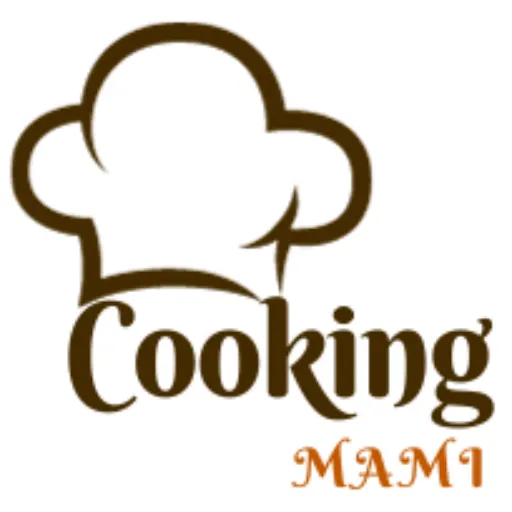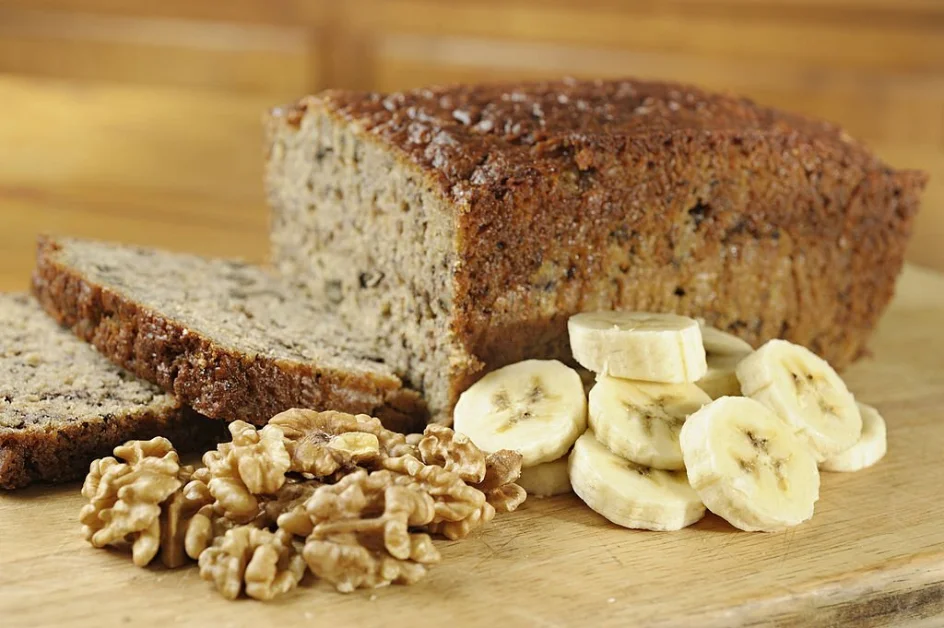Introduction to Banana Bread Variations
Banana bread, a timeless comfort food, has evolved significantly since its popularization in the 1930s. Traditionally, recipes call for baking soda, a key leavening agent that gives banana bread its characteristic rise and fluffy texture. However, modern culinary experimentation has led to a variety of banana bread recipes, some of which omit baking soda altogether. This variation caters to those who might not have baking soda at hand or prefer a denser, moister loaf. Understanding the role of baking soda and its alternatives is crucial in mastering this beloved bake.
The Science of Baking Without Baking Soda
In traditional baking, baking soda (sodium bicarbonate) acts as a leavening agent. When combined with acidic ingredients, it produces carbon dioxide, contributing to the dough’s rise. However, omitting baking soda doesn’t mean sacrificing quality. Alternatives like baking powder or a combination of acidic ingredients (like yogurt or buttermilk) with baking powder can compensate for the absence of baking soda.
For instance, using buttermilk as a substitute introduces both the required acidity and moisture, creating a tender crumb in the banana bread. Similarly, incorporating ingredients like yogurt can add richness while aiding in the leavening process. Understanding these substitutions is key to achieving a desirable texture and flavor in banana bread without baking soda.
Key Ingredients for Baking Soda-Free Banana Bread
Creating a delightful banana bread without baking soda requires a careful selection of ingredients. Here’s a breakdown of the key components:
- Overripe Bananas: The star of the show, overripe bananas provide natural sweetness and moisture. They are crucial for the bread’s texture and flavor.
- Flour: All-purpose flour is the standard choice, offering structure to the bread.
- Sugar: Cane or white sugar adds sweetness and balances the flavors. For a healthier alternative, consider using honey or maple syrup.
- Baking Powder: A common substitute for baking soda, baking powder can provide the necessary rise.
- Eggs: They bind the ingredients together and contribute to the bread’s richness.
- Salt: A pinch of salt enhances the overall flavor profile.
- Vanilla Extract: It adds a subtle aroma and depth of flavor. High-quality vanilla extract can make a significant difference.
- Nuts (Optional): Walnuts or pecans add a crunchy texture and nutty flavor.
Each ingredient plays a pivotal role in the bread’s texture and taste. For instance, the type of sugar used can affect the bread’s moisture level. Similarly, the choice between walnuts and pecans can introduce different flavor nuances.
Mastering Baking Soda-Free Banana Bread: A Step-by-Step Guide
Making banana bread without baking soda is simpler than you might think. Here’s a detailed guide to help you create a delicious loaf:
- Preparation: Start by preheating your oven to 350°F (175°C). Grease an 8×4 inch loaf pan or line it with parchment paper for easy removal.
- Mix Dry Ingredients: In a large bowl, sift together 2 cups of all-purpose flour and ½ teaspoon of salt. If you’re using baking powder, add 1 teaspoon at this stage.
- Mash Bananas: In a separate bowl, mash 4 overripe bananas. The riper the bananas, the sweeter and more flavorful your bread will be.
- Combine Wet Ingredients: Beat in 2 eggs and ⅔ cup of white sugar to the mashed bananas. Add 1 teaspoon of high-quality vanilla extract for an aromatic touch.
- Combine Wet and Dry Ingredients: Gradually add the dry ingredients to the wet mixture. Stir until just combined to avoid overmixing, which can lead to a dense bread.
- Add Nuts (Optional): Fold in ½ cup of chopped walnuts or pecans for a crunchy texture.
- Bake: Pour the batter into the prepared loaf pan. Bake for 55 to 65 minutes, or until a toothpick inserted into the center comes out clean.
- Cool: Allow the bread to cool in the pan for 10 minutes, then transfer it to a wire rack to cool completely.
This recipe yields a moist, flavorful banana bread that’s perfect for any occasion. For a twist, consider adding chocolate chips or a swirl of cinnamon for extra flavor.
Creative Twists: Alternative Banana Bread Recipe Ideas
Banana bread is versatile, and there are numerous ways to customize it to your taste or dietary needs:
- Vegan Banana Bread: Replace eggs with flax eggs and use dairy-free milk.
- Gluten-Free Option: Substitute all-purpose flour with a gluten-free blend. For more gluten-free baking ideas, explore our Three Cheese Chicken Alfredo Bake Recipe.
- Sugar Alternatives: Swap white sugar with coconut sugar or agave nectar for a healthier version.
- Spiced Banana Bread: Add spices like nutmeg, cardamom, or allspice for a warm, aromatic flavor.
- Fruit and Nut Add-Ins: Incorporate dried fruits like raisins or different nuts for added texture and taste.You can also add dried fruits such as raisins or cranberries for a burst of sweetness. Our Banana Chocolate Chip Cookies recipe offers great inspiration for adding chocolate chips to your banana bread.
- Pumpkin Banana Bread: Mix in some pumpkin puree for a fall-inspired variation. The pumpkin adds moisture and a subtle sweetness that pairs wonderfully with bananas.
- Savory Options: For a less sweet version, reduce the sugar and add savory ingredients like cheese or herbs. This twist can turn your banana bread into a delightful accompaniment for soups or salads.
These substitutions not only cater to different dietary preferences but also add exciting twists to the classic banana bread recipe.
Storing and Serving Suggestions
Proper storage is key to maintaining the freshness of banana bread. Once completely cooled, wrap the bread in wax paper or aluminum foil and store it in an airtight container at room temperature. It will stay fresh for up to 3 days. For longer storage, freeze the bread by wrapping it tightly in plastic wrap and placing it in a freezer bag. It can be frozen for up to 3 months.
When serving, banana bread can be enjoyed plain or embellished with various toppings. Spread a layer of cream cheese for a rich, creamy texture, or drizzle with honey for added sweetness. Toasting slices of banana bread can also enhance its flavor and texture, making it a delightful treat for breakfast or as a snack.
Common Mistakes and Troubleshooting
Baking banana bread without baking soda can be a delightful experience, but it’s not without its challenges. Here are some common mistakes and their solutions:
- Overmixing the Batter: This can lead to dense bread. Mix just until the ingredients are combined.
- Incorrect Measurement of Ingredients: Precision is key. Use measuring cups and spoons for accuracy.
- Altitude Adjustments: High altitude can affect baking. Reduce baking powder and increase liquid slightly.
- Humidity Considerations: In humid climates, flour absorbs moisture. You may need to adjust the amount of flour or liquid.
- Uneven Baking: Rotate the bread midway through baking for even browning.
- Sticking to the Pan: Ensure your pan is well-greased or lined with parchment paper.
- Under or Overripe Bananas: Use bananas that are just right – overly ripe for sweetness and softness, but not too mushy.
By being mindful of these common issues and making necessary adjustments, you can ensure your banana bread turns out perfect every time.
FAQs Based on People Also Ask
-
What can I use instead of baking soda in banana bread?
- Baking Powder: This is the most common substitute for baking soda in banana bread. Use about three times the amount of baking powder in place of baking soda.
- Buttermilk or Yogurt: These can be used to add acidity to the batter, which helps with the rise. If you use buttermilk or yogurt, reduce the amount of other liquids in the recipe accordingly.
- Whipped Egg Whites: Beating egg whites until they form stiff peaks and folding them into the batter can introduce air and volume, somewhat mimicking the leavening effect of baking soda.
-
What happens if you forget baking soda in banana bread?
- Without baking soda, banana bread may not rise as much as it typically would, leading to a denser texture. However, the bread can still be quite edible and tasty. The flavor will be largely unaffected, but the bread will be heavier and more compact.
-
What can I use instead of baking soda?
- Baking Powder: As mentioned, it’s a great all-around substitute for baking soda.
- Potassium Bicarbonate: This is a less common alternative but works similarly to baking soda without the sodium content.
- Club Soda: In recipes where baking soda is used alongside an acid, club soda can be a good substitute as it introduces carbonation and slight acidity.
-
How do you bake without baking soda?
- Use Baking Powder: It contains baking soda and an acidifying agent, so it can be used in recipes calling for baking soda.
- Incorporate Air: Techniques like creaming butter and sugar or whipping egg whites can introduce air into the batter, helping it rise.
- Acidic Ingredients: Using acidic ingredients like buttermilk, yogurt, or vinegar in combination with baking powder can help achieve the desired rise.
- Steam: In some recipes, steam generated during baking can help lift the batter, though this is more effective in items like soufflés or puffed pastries.

